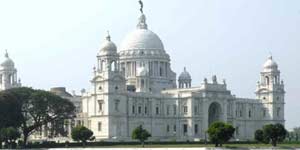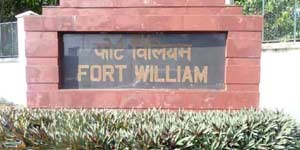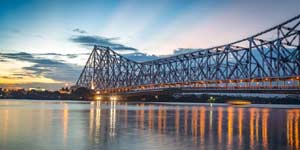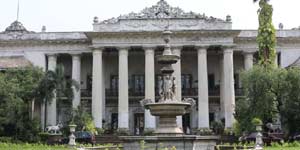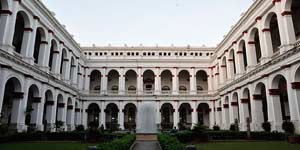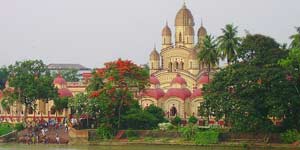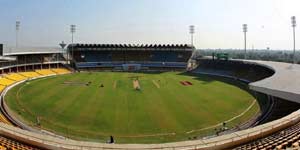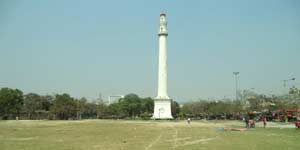
Howrah Bridge
Howrah Bridge (Rabindra Setu) is an iconic landmark of the city of Kolkata. On River Hooghly, the bridge plays the role of the gateway to Kolkata, as it connects the city to the Howrah Station, the most important railway station of Kolkata. It took around 7 long years to build the Howrah Bridge. Howrah Bridge boasts a length of 1528 feet and a width of 62 feet. On both sides of the bridge, there are pavements of 7 feet width. It is a cantilever bridge and its construction amazingly did not include the use of nuts or bolts. It is the fourth busiest Cantilever bridge across the globe. The total expense of building the Howrah Bridge was around £2,500,000. Howrah Bridge takes the load of around 90,000 vehicles and countless pedestrians daily. The bridge is famously called Rabindra Setu.
Location of Howrah Bridge, Kolkata
Howrah Bridge, the fourth busiest Cantilever bridge across the globe nestles on the Hooghly River and interlinks the eastern bank of Howrah to the western bank of the Kolkata city.
History of Howrah Bridge, Kolkata
Howrah Bridge is one of the most celebrated landmarks of Kolkata. Situated on River Hooghly, it serves as the lifeline of the city. The construction process of the Howrah Bridge initiated in the year 1939, to bridge up the gap between Howrah and Kolkata. Previously, a pontoon bridge was built by Sir Bradford Leslie in 1874. However, that bridge was redesigned and Howrah Bridge was constructed in 1942. It was opened for public use from February 1943. It took around 7 long years to complete the construction. In 1920, six engineers were recruited for a permanent bridge between Kolkata and Howrah. During the first term of the committee, Sir Rajendra Nath Mukherjee was the Chief Engineer for the project. Tata Steel supplied the steel.
Howrah Bridge is counted among the busiest cantilever bridge across the globe. It is reckoned as an outstanding engineering work accomplished by the British. Amazingly, the entire structure of the bridge does not include any nuts or bolts. The bridge was made from 26500 tons of high-tensile steel, supported by 2 piers. Each pier of the Bridge is around 90 meters above the road. At the time of its building, Howrah Bridge was acknowledged as the third longest cantilever bridge. Presently, it is the sixth longest bridge of its type in the world.
Howrah Bridge features two sections that covered the whole bridge connecting both the sides. The bridge has also been illuminated by electricity. Howrah Bridge boasts a length of around 1528 feet and it has a width of about 62 feet. There are wide pavements on either side of the bridge, which are 7 feet wide. The road of 48 feet with 8 lanes serves commuters and traffics all round the day. The Height of Howrah Bridge from the riverbed is 29 feet. Howrah Bridge bears a regular traffic load of roughly 90,000 vehicles and countless pedestrians. On June 14, 1965, the bridge was renamed after the Nobel laureate Rabindranath Tagore and famously called Rabindra Setu.
Monuments in Kolkata
Kolkata, famously known as the ‘City of Joy’, is not just another metro city, but has an important place in the history of India. It was the first capital of the British rulers when they had just started building their system of administration to empower their position in the country. The city has gone through multiple transformations industrially and culturally since its formation. In Kolkata you will find multiple places to tell the story of the British age. Here we discuss five historic places and monuments in Kolkata. Kolkata, which is often called the city of joy is one great destination which is rich in many monuments which reflects the beauty of the glorious past. The city was even a charm during the British rule and it is still a charm. The various monuments available in Kolkata reflect the stories about the city. The beauty of these monuments is unmatched or is rather growing with time. The best monuments in Kolkata is listed here for those who want to check them out when traveling here.


